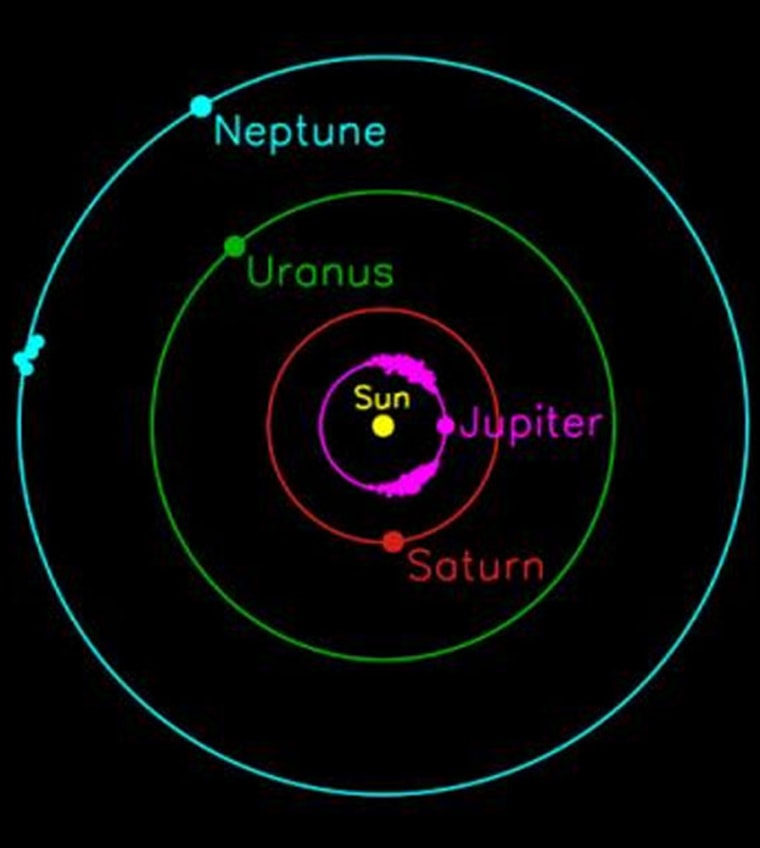Astronomers have detected three new rocky bodies that share the same orbit as Neptune as it travels around the sun.
The finding, detailed in Friday's issue of the journal Science, brings the total number of the gas giant's asteroid companions, or “Trojans,” up to four.
The highly inclined orbit of one of them supports the hypothesis that the Neptune Trojans were captured from a much larger asteroid "cloud" that surrounds the planet, and that they are not the broken remains of some larger object, as some scientists have speculated.
The Trojans gather around one of Neptune's two so-called "Lagrangian" points. In these regions — located 60 degrees in front of and behind the planet in its orbit — the sun and Neptune's gravity combine to ensnare passing objects.
The orbit of one of the new Trojans is tilted about 25 degrees relative to the plane that Neptune orbits the sun, compared with only about 5 degrees for the other three Trojans.
The way the survey was set up, it was very unlikely that such a highly inclined object would be detected. The fact that it was indicates that there are at least as many — and possibly more — highly inclined Trojans existing far from the solar system plane compared with low-inclination ones, said study team member Chadwick Trujillo of the Gemini Observatory Hawaii.
"The Neptune Trojans are a thick 'swarm,' not a thin population confined to the plane," Trujillo told Space.com.
